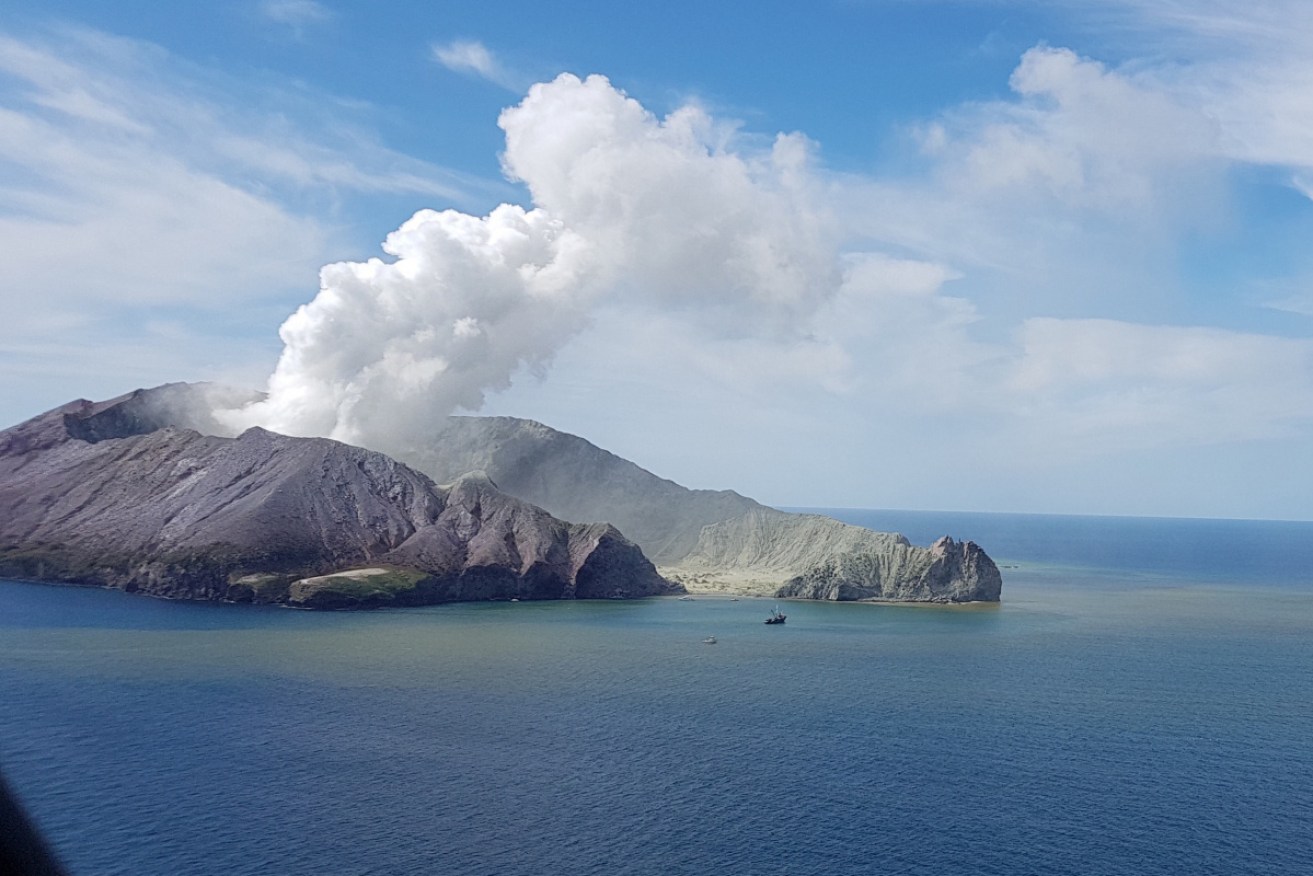White Island volcano eruption: Why were tourists allowed on the island?


A towering blast of ash and boiling hot steam erupted from White Island on December 9. Photo: Auckland Rescue Helicopter Trust/AAP
The sudden volcanic eruption that killed at least six people on New Zealand’s White Island has raised questions over why tourists were allowed to visit the area in the first place.
At the time of Monday’s deadly explosion around 2.10pm, 47 people were visiting the island – 24 from Australia, nine from the United States, two Britons, four from Germany, five from New Zealand, two from China and one from Malaysia.
Three of the five dead are believed to be Australians, Prime Minister Scott Morrison confirmed.
- Read: Volcano victim remembered as ‘spectacular’ young man, as Australian families prepare for worst
Monday’s tragedy marked the first time people had died from an eruption on the island in more than 100 years. But there have been signs of activity.
While the dangers of setting foot on an active volcano are obvious, the threat of eruption hasn’t stopped people from visiting White Island or tour companies plugging it as a top tourist attraction.
Old newspaper clippings show men had lived and worked on the island to fish and mine sulphur for things like gunpowder and fertiliser as early as the 1880s.
But unlike most of the island’s previous eruptions, this one seemingly happened without warning.
Volcanologists at GeoNet, the agency responsible for monitoring and issuing alert levels for all the volcanoes in New Zealand, described the eruption on Monday as “impulsive and short-lived”, with an ash plume that reached more than three kilometres above the vent.
Ray Cas, an emeritus professor in geosciences at Monash University, said the eruption has “been a disaster waiting to happen for many years”.
“Having visited twice, I have always felt that it was too dangerous to allow the daily tour groups that visit the uninhabited island volcano by boat and helicopter,” Professor Cas told the Australian Science Media Centre.
The last eruption at White Island happened in 2016.
Unlike Monday’s eruption, that time GeoNet scientists were able to spot water levels reducing in the volcano’s crater lake beforehand – so they knew there was an elevated risk.
Professor Cas said the island had a “very active geothermal system”, with steaming gas vents and a number of crater lakes filled with hot water.
This unique structure could partly explain why there were no warning signs of the terror to come.
Professor Richard J Arculus, an emeritus professor at the Australian National University’s research school of earth sciences, said the eruption on White Island was “like a lid blowing off a pressure cooker”.
“If groundwater gets in direct contact with magma, and the seal of rock that stops the magma from escaping breaks, it’s an explosive combination,” Professor Arculus told The New Daily.
“Essentially, super-pressured, super hot steam blows off the whole lid.”
He said if there had been any warning signs, the tourists would have been rushed off the island.
“None of the warning signs were there in this particular instance because it was a failure of the seal … it was like watching a bridge suddenly collapse,” Professor Arculus said.
Normally, these sorts of eruptions start with small eruptions of ash that gradually build in intensity, he explained.
“If there’d been a puff of ash water coming out of the lake, you’d get out of there,” he said.
When all the pressurised water and gas reached ground level at White Island, the explosion would have erupted outwards, shooting gas, rocks and dust travelling at high velocity along the crater’s floor.
Does this mean the end for tourism on White Island?
Probably not.
Tours of the iconic island have been running for more than 30 years and pump huge amounts of money into the town of Whakatāne.
More than 20,000 people visit the island every year, with 80 per cent of those travelling from overseas.
Professor Arculus said once all the dust was cleaned up on the island and it was deemed safe to visit again, tourists would come flooding back.
“It provides quite an economic benefit to the communities around there,” he said.
“You’re not going to stop the tours – people will still go there without the expert guides.”









